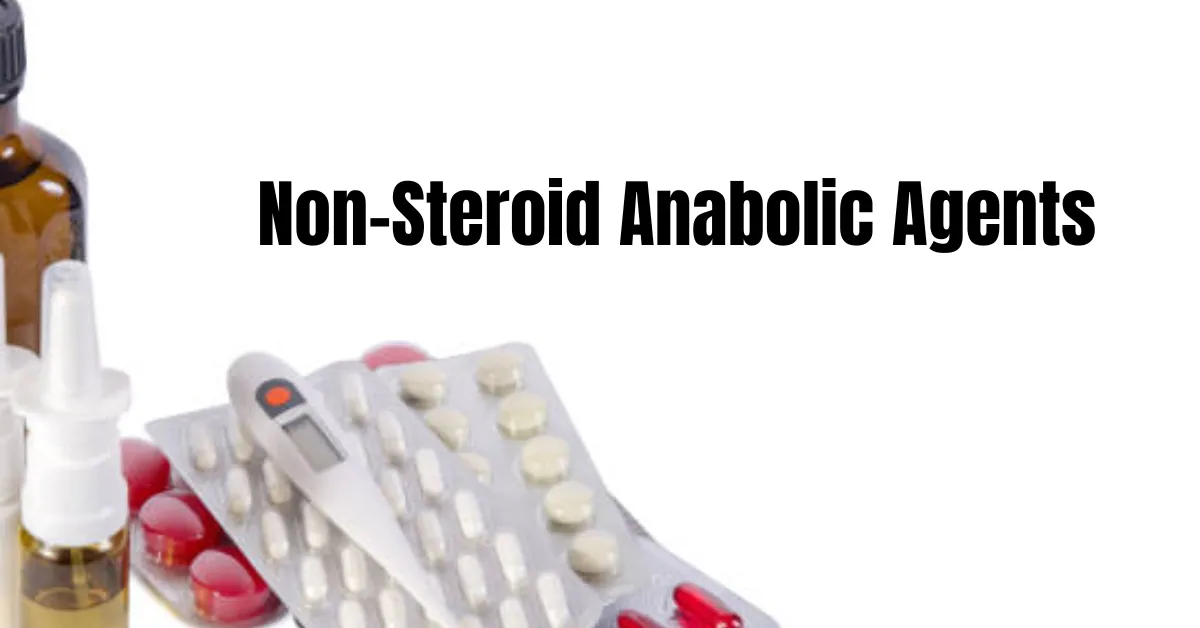Having improved performance and more inflexible muscles is undeniably obsessive in fitness and bodybuilding. Steroids used to be the prevalent choice among athletes, powdering the way to non-steroidal anabolic agents that are less damaging and probably more effective. Besides, the question is where the two of them act. Now, we will look into the realm of non-steroid anabolic agents to outline the types, uses, pros, and cons that might be noticed.
What are Non-Steroid Anabolic Agents?
Anabolic agents that aren’t steroidal – natural anabolics – are substances responsible for muscle growth and workout boosts without the utilization of any synthetic steroids. In contrast to traditional anabolic steroids that bring about a series of adverse reactions, non-steroid alternatives activate anabolic systems that are inherently present in men’s and women’s bodies.
List of Non-Steroid Anabolic Agents
Here’s a simplified list of non-steroid anabolic agents:
- Creatine
- Beta-alanine
- HMB (Beta-Hydroxy Beta-Methylbutyrate)
- Laxogenin
- L-Carnitine
1. Creatine
Creatine is a non-synthetic compound in muscle cells that helps generate energy within limits during intense exercise.
Function:
Its rise of phosphocreatine level in muscles enhances their strength and power outputs.
Benefits:
- Enhanced muscle mass
- Increased strength
- Improved exercise performance
Side Effects:
- Bloating
- Gastrointestinal discomfort
- Muscle cramps
Dosage Plan:
These dosages come in two phases: 20-gram daily doses for the first five to seven days and a maintenance dose of 3-5 grams for the remainder of the treatment.
General Public Review:
Creatine is a favorite of many athletes and bodybuilders who use it for its widely known strength, performance, and muscle-gaining capacity.
2. Beta-Alanine
This is a non-essential amino acid that helps increase muscle carnosine levels.
Function:
Carnosine is a buffer that prevents lactic acid concentration from which muscle weariness develops during intensive exercise.
Benefits:
- Improved endurance
- Delayed muscle fatigue
- Increased training volume
Side Effects:
There will be cases where an individual will have a tingling sensation called paresthesia, which has to do with the high doses.
Dosage Plan:
The typical dosage is 2 to 5 grams per day, which is supposed to be taken 2 or 5 times each day.
General Public Review:
The amino acid beta-alanine, acclaimed for providing the extra capacity to keep working out till the last moment in high-intensity training regimes, is termed.
3. HMB (Beta-Hydroxy Beta-Methylbutyrate)
HMB is a leucine metabolic product that breaks down into isovaleric acid in the body.
Function:
This minimizes amino acid breakdown and increases the level of muscle protein synthesis.
Benefits:
- Increased muscle mass
- Enhanced strength
- Accelerated recovery
Side Effects:
Generally, it is quite acceptable as a medication, though sometimes, at higher dosages, abdominal discomfort can be a side effect.
Dosage Plan:
The recommended dosage is 1.5-3 g/day in two to three portions. Additionally, fish oil intake is recommended to reduce depression symptoms.
General Public Review:
HMB can be considered an ingredient that helps support muscle growth and recovery processes, particularly in conjunction with resistance training.
4. Laxogenin
Laxogenin (LG), also from plants, comprises brassinosteroids.
Function:
It may help induce anabolic impact by boosting the production of proteins and retaining nitrogen.
Benefits:
- Muscle growth
- Enhanced recovery
- Increased strength
Side Effects:
There is little research on long-term side effects; however, first-time users may experience mild digestive issues in the initial phases.
Dosage Plan:
Jointly rat dosages of 50-200mg/day are prescribed frequently.
General Public Review:
Laxogenin recently became an alternative natural to prohormones, with people pointing out that their muscles are growing and increasing in size and strength.
5. L-Carnitine
This compound is an amino acid derivative that transports fatty acids into mitochondria for energy.
Function:
It breaks fatty acids and may reduce glycogen use during exercise.
Benefits:
- Improved fat metabolism
- Enhanced endurance
- Reduced muscle damage
Side Effects:
It is seldom, but some people may suffer a feeling of queasy and gastrointestinal problems.
Dosage Plan:
Sizes usually vary from 500 mg to 2 gr daily.
General Public Review:
L-carnitine is valuable to athletes and fitness devotees because it is involved in fat metabolism and energy generation.
Conclusion
Non-steroid anabolic agents stand out as an excellent choice for people concerned with the risks that often arise with traditional anabolic steroids and yet want to improve their body performance and build their physique. From creatine to L-carnitine, these supplements are both naturally sourced and powerful mirrors of the body’s physiological mechanisms aimed at muscle growth, strength, and endurance. Nevertheless, unlike illegal drugs that lure speedy relief, the safety profile and long-term benefits make herbal supplements an ultimate choice for many consumers. Discussing with medical personnel before starting a regimen will be necessary to certify your safety and the right strategy to use. All of you, ranging from the most competitive athletes to those aiming merely at being weekend warriors, could easily include non-steroidal anabolic agents in your training regimen to achieve the fullness of your potential naturally.
Read more…
Hair Loss: types, causes, and side effects
Acne: Types, Causes, Benefits, and Side Effects
Diuretics: types, uses, benefits, and side effects
Fat Loss Agents: types, uses, benefits, and side effects
